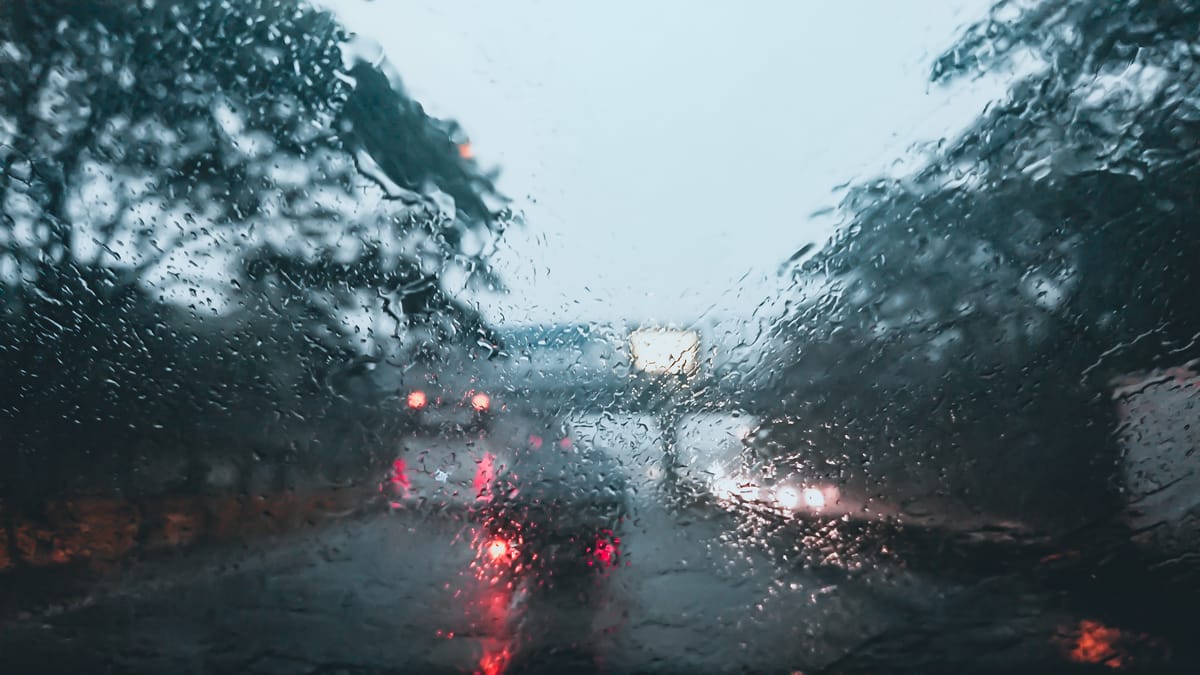Driving in the Rain: How to Stay Calm, Safe & Confident on Wet Roads in Kenya

Five years ago, my friend bought his first car - a shiny BMW 3 Series. Buzzing with excitement, we hit the Nairobi-Nakuru highway, off to Naivasha. But just past the Viewpoint, the clouds burst open. Sheets of rain, visibility near zero. He pulled over, turned off the engine, and said, “Let’s wait it out.” That was the first time I saw fear behind the wheel. And honestly? We've all been there.
Driving in the rain isn’t just about water - it’s about uncertainty. Will the brakes respond? What if I can’t see the road? What if someone else panics?
But here's the truth: Confidence in rainy conditions isn't about being fearless. It's about being prepared - knowing your car, anticipating the road, and staying calm under pressure.
In this guide by Peach Cars, we’ll walk you through real, practical ways to stay confident on Kenya’s wet roads. Whether you’re a first-time driver or just a cautious one, these tips will help you drive smarter, safer, and with much more peace of mind.
Why Driving in the Rain Feels So Hard
Rain doesn’t just make you wet. It completely changes the way your car and road interact. And for Kenyan drivers, the rainy season comes with its own unique set of hazards:
- Reduced surface grip. That perfect asphalt or tarmac suddenly gets a slick layer. This oily film affects how your tyres connect with the road. Think of it like walking on a wet tile floor. You need to be much more careful. Your car needs to be too.
- Visibility also takes a big hit. Raindrops on the windscreen make it hard to see. Spray from other vehicles creates a curtain of water, and overcast skies reduce natural light.
- Seeing clearly is fundamental to safe driving. Reduced visibility means less time to spot danger. It means less time to react safely.
- Surprise puddles are another classic Kenyan rainy season challenge. What looks like a shallow pool might hide a deep pothole. Hitting these unexpectedly can cause serious damage. It can even cause you to lose control.
And let's not forget the added stress of traffic. People will either be more cautious or impatient. Knowing such challenges will help you become focused and patient on the road.
Before You Start the Engine: Prep Like a Pro
Before even leaving the parking lot, do this simple, 5-minute checklist that could save your life:
- Check Your Tyres
Your tyres are your first line of defence on wet roads. Worn-out or underinflated tyres can lead to hydroplaning - a terrifying moment when your car rides on water, not the road.
- Check tyre tread depth – replace if it’s too low.
- Confirm tyre pressure – under or overinflated tyres reduce grip.
- Inspect for bulges, cracks, or uneven wear.
- Make sure all four tyres are roadworthy, not just the front ones.
Pro tip: Invest in good tyres. It’s one of the best safety decisions you’ll ever make.
Be Seen, Stay Safe!
Your lights aren’t just for night driving. Rain makes cars nearly invisible.
Make sure your windscreen wipers are effective and top up washer fluid.
Replace any burnt-out bulbs - immediately.
Test brake lights and indicators.
Turn on headlights (even during the day).
Also: clean your windows inside and out for a clear, glare-free view - a good microfibre towel will do it!
Once You’re Driving: Stay Smooth, Stay Sharp
So your car’s ready. Now, it’s about how you drive.
Take It Slow - On Purpose
Rain doubles your stopping distance. Ease off the accelerator. Keep a generous distance between you and the car ahead. You’ll thank yourself when they slam the brakes and you have space to respond.
Being tailgated? Don’t speed up. Let them pass and stay focused.
Avoid Sudden Movements
Wet roads are not the place for jerky moves.
- Brake gently.
- Accelerate gradually.
- Turn smoothly.
- If you feel a skid coming on, steer into the direction of the skid - not against it.
Use Your Eyes Wisely
- Turn on your headlights, even in drizzle.
- Avoid switching lanes unnecessarily.
- Follow the tracks of the car ahead - they’ve already tested the surface for you.
Avoid Flooded Shortcuts
Floodwaters can kill your engine, flood your interior, and leave you stranded. If you can’t gauge the depth, don’t risk it. Find another route - even if it takes longer.
Water damage isn't just inconvenient. It's expensive. Think engine failure, electrical shorts, and more.
What to Do If You Skid
Skidding is scary. Your instincts will scream “slam the brakes!” Don’t.
Here’s what you should actually do:
- Ease off the accelerator. No sudden braking.
- Gently steer into the skid.
- Keep calm. Don’t fight the car. Let it realign.
Once the tyres grip again, straighten your steering and continue slowly. You’ll get through it.
Confidence Is a Skill You Build
Rain doesn’t have to stop you. It should slow you down, yes—but it shouldn't shake your confidence.
The more you prepare, the calmer you’ll feel. And remember, the road is not a racetrack. Arriving safe is the real win.
Looking for a Reliable Car Built for Kenya’s Rainy Roads?
At Peach Cars, we help you find cars that are reliably inspected, well-maintained, and perfect for every season. We’re not just about buying and selling—we’re here to guide you with expert safety tips, helpful advice, and peace of mind.
Your safety is our priority - rain or shine!
Talk to us today to find your perfect ride.
🚘 Bookmark this guide. Share it with your driving group. Revisit before the next downpour. Stay safe, and happy driving. #RainySeasonDriving #KenyaRoadSafety #PeachCarsTips #ConfidentDriver #WetRoadDriving #CarSafetyKenya #DrivingInTheRainKenya #AvoidSkids #HydroplaningTips




